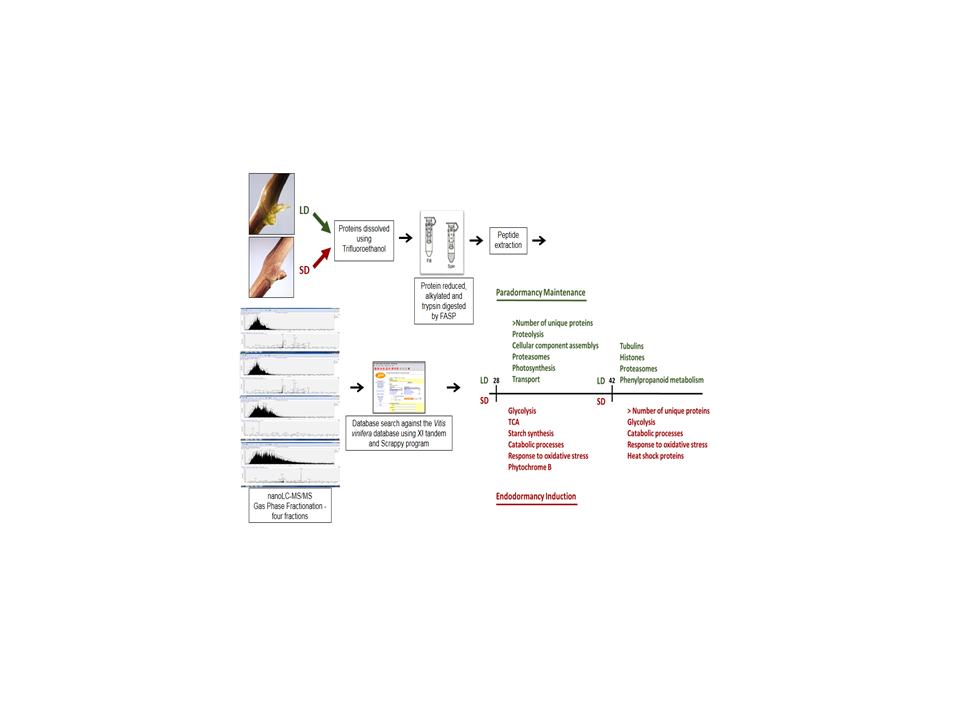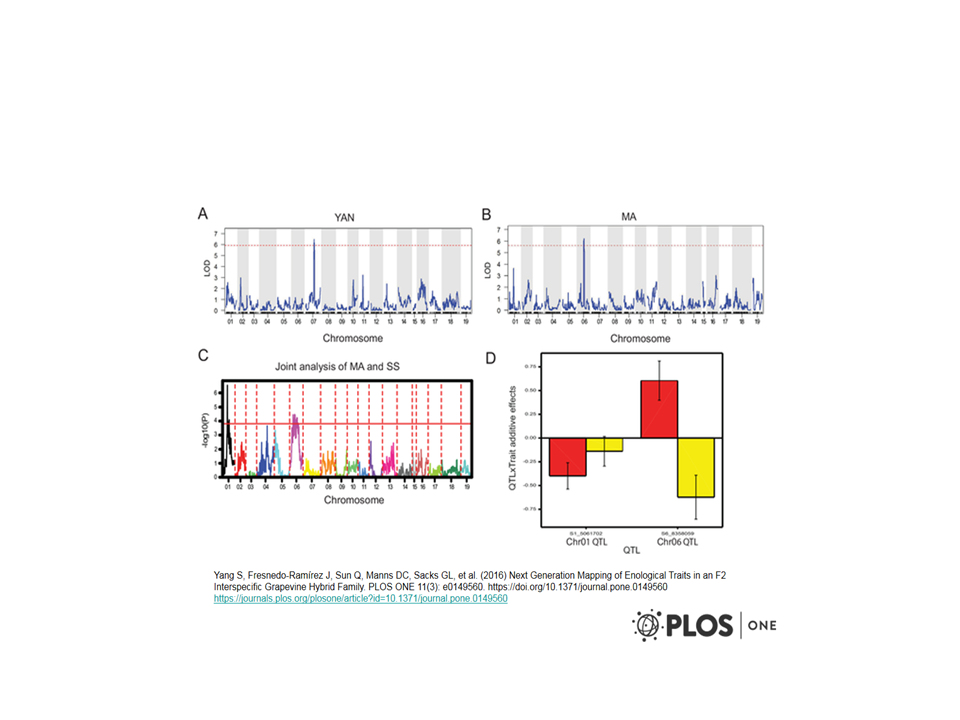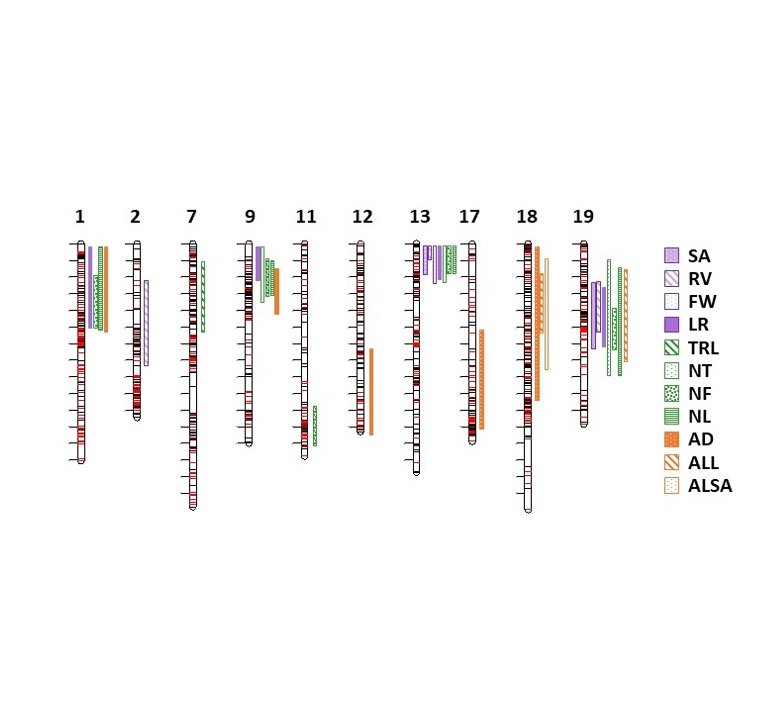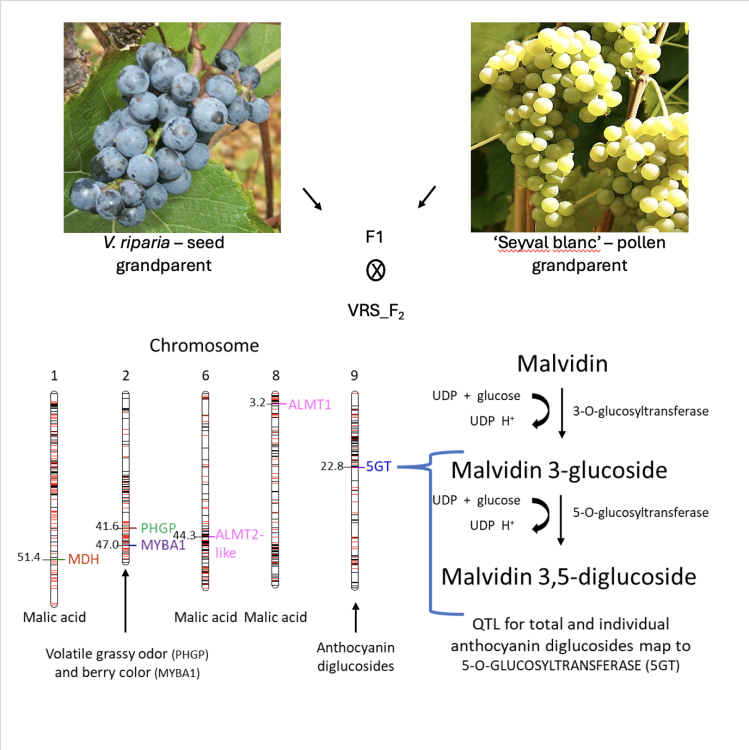
Title
Distinguished ProfessorOffice Building
Edgar S. McFadden Biostress LabOffice
254BMailing Address
McFadden Biostress Laboratory 254BAgronomy, Horticulture & Plant Science-Box 2140C
University Station
Brookings, SD 57007
Education
B.S. Iowa State UniversityM.S. University of Minnesota
Ph.D. University of Minnesota
Academic Interests
Grapevine bud dormancy and cold hardinessGrapevine Genetics and genomics
Plant Physiology and Molecular Biology
Academic Responsibilities
HO411/511 Fruit Crop Production Systems (rotating crop topics: tree fruits, grapevine, brambles, native fruits, strawberries)Bio/PS664 Molecular Plant Physiology (team taught)
PS763 Crop Physiology (Fennell, Gu, Nleya)
PS781 Graduate Seminar
HO/NUTR/PS 426/526 Production Wine, Beer Spirits
Committee Activities
University Promotion and TenureAHPS Executive Team
Awards and Honors
College of Agriculture, Food and Environmental Sciences Outstanding Researcher, 2021South Dakota State University Distinguished Professor, 2020
Faculty Award for Global Engagement (International Research, SDSU), 2019
John Robertson Award, South Dakota Horticulture Society, 2017
College of Agriculture and Biological Sciences Distinguished Research Award, 2008
Gamma Sigma Delta Research Award of Merit (SDSU), 2008
Women of Distinction Faculty Award (SDSU), 2007
F.O. Butler Award for Excellence in Research (SDSU), 2006
ABS Dean’s Team Award for Entrepreneurship, Production, and Agritourism in Horticulture Specialty Crops, 2004
Sigma Xi Scientific Research Society (SDSU), 1997
ABS Dean’s award of research excellence in recognition of research contributions to the South Dakota’s new farm winery industry, 1997
Pi Alpha Xi Ornamental Horticulture Society, 1992
Grants
USDA-NIFA Acquisition of a GC-TQMS for Metabolomics Research and Teaching.USDA-NIFA Completing the grapevine powdery mildew resistance pipeline: From genes on the shelf to sticks in the ground.
USDA-Specialty Crop Grant, Mitigating freezing damage in emerging wine and seedless table grapes during fall acclimation and spring deacclimation.
NSF MRI: Acquisition of a Heterogeneous High‐Performance Computing Cluster Driven by Computational and Data‐Intensive Multidisciplinary Research
USDA-NIFA Establishing best practices to maximize yield of the culturally relevant Amelanchier (Juneberry)
NSF Research PGR: Adapting perennial crops for climate change: Graft transmissible effects of rootstocks on grapevine shoots.
Work Experience
Distinguished Professor, SDSU, Agronomy, Horticulture and Plant Science Department (2020-present)Professor, SDSU, Agronomy, Horticulture and Plant Science Department (2011-present)
Department of Horticulture, Forestry, Landscape and Parks (HFLP) (2002-2011)
Visiting Professor to University of Verona, Verona, Italy (2010)
Visiting Professor to INP - ESNAT, Castenet, France (2007)
Sabbatical Faculty Appointment, Oregon State University, Corvallis, Oregon (2000)
Associate Professor, SDSU, Department of Horticulture, Forestry, Landscape and Parks (1997-2002)
Assistant Professor, SDSU, Dept. Horticulture, Forestry, Landscape and Parks (1992-1997)
Creative Activities
Executive Committee Member and Co-PI of multi-institutional research programs, including: VitisGen3 (USDA-NIFA funded 2022-2026), Adapting Perennial Crops for Climate Change: Graft Transmissible Effects of Rootstocks on Grapevine Shoots (NSF 2016-2024), BioSNTR (NSF and SDRIC funded 2014-2019). Role: SDSU computational core and mentorship lead; USDA/AFRI CAP project 2011-2016: Accelerating grape cultivar improvement via phenotyping centers and next generation markers (B. Reisch, PI). Role: Phenotyping Centers Lead and developer of SDSU low temperature response phenotyping center; USDA/AFRI CAP project 2011-2016: Northern Grapes: Integrating viticulture, winemaking, and marketing of new cold hardy cultivars supporting new and growing rural wineries. (T. Martinson, PI). Lead for genomic analysis of fruit ripening component, RNASeq analysis of fruit ripening and denovo assembly of hybrid cultivar transcriptomes.Organizer of the International Plant and Animal Genome Conference Plant Dormancy Workshop 2015-2018. Frontiers in Plant Science Topic editor for “Improving crop production in the light of climate change” and Improving Fruit Crop Production in the Light of Climate Change: First and Second Edition.
Member of the National Committee of Visitors for NSF funded Viticulture and Enology Science and Technology Alliance (VESTA) Center of Excellence (2013–ongoing). NSF funded Grape Research Coordination Network Advisory Committee Member (GRCN 2010-2013).
NSF Research Experience for Undergraduates (REU) mentor for three students in NSF REU Site: High Performance Computing in STEM Disciplines at South Dakota State University #1559978 2016-17 and NSF SD EPSCOR IIA 1355423 REU Experiences. Development of NSF funded course and content for SD middle school teachers: “Using native plants to teach science”. Development of cold climate grapevine educational outreach exhibit in cooperation with the South Dakota Agricultural Museum.
Member of the National Grape Research Alliance Natural Resources and Environmental Research Committee (Appointed 2017 and ongoing). SDSU representative for the NE1720 Multi-state coordinated evaluation of winegrape cultivars and clones (2008-2016 NE1020, NE1720 2017-ongoing).
Area(s) of Research
Bud dormancy is an integral component of growth cycling, productivity and winter survival in perennial plant systems. It is an adaptive strategy for the survival of drought, high temperature, low temperature, and freeze-dehydration stress. In a changing climate timing of dormancy induction and release are critical for sustainable production. Dormancy is not a static state, rather a dynamic phase of plant development that impacts the geographical range, yields and management strategies of many woody species, including grapevines (Vitis). My lab’s research programs are focused on the genetic, physiological and phenotypic aspects of grapevine bud dormancy, cold hardiness and chilling fulfillment. Specifically, to identify genes, pathways and genetic architecture which impact sustainable production of grapevine and other perennial systems. This knowledge is key to marker assisted selection of new materials, and identifying existing cultivars that are well-adapted to changing northern temperate environments and development of management strategies for sustainable production.Department(s)
Image for Department of Agronomy, Horticulture and Plant Science
Department of Agronomy, Horticulture and Plant Science





